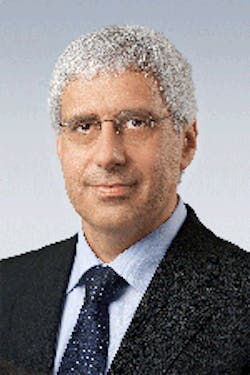Guest Editorial: 20 years of wind energy: Will it continue?
In 1991, the German Act on the Sale of Electricity to the grid made wind energy marketable in Germany. Twenty years on, many countries across the world could not imagine life without wind energy. It has been established as one of the most popular sustainable forms of energy.
Chairman of the Executive Board
Bosch Rexroth AG
editor
[email protected]
Bosch Rexroth is one of the companies that recognized the potential of this future technology at an early stage. Long before wind energy was fully industrialized, Bosch Rexroth was developing the idea that rotational energy generated by the wind could be converted into electrical energy. We had already developed gear boxes for wind energy plants in the 1980s and so were helping the new industry to become competitive.
There were also numerous challenges to overcome, including the issue of reliability, which proved to be one of the most formidable right from the start. Efficiency also became an increasingly important factor. Wind energy plants today use state-of-the-art drive technology to reliably generate electrical energy at constantly falling electricity production costs. In the coming years, the cost of energy will determine the success of wind energy, and, therefore, the success of the companies that generate and use it. This factor has become the linchpin of an industry that is increasingly under pressure to prove that it is profitable as well as sustainable.
Another aspect that has increased in importance alongside a service-life requirement of more than 20 years is service strength, which is determined by scope, quality, and the individuality of the maintenance and repair process. The image of wind energy plants has changed in recent years, from small windmills with a lattice tower and an output of just a few hundred kilowatts to 200-meter-tall high-tech plants with an output of 7.5 MW. The plants of the future are no longer found on land, but rather in the sea. Experts calculate that the wind there rotates the turbines at a speed of 10 m/sec (yearly average), which corresponds to an approximate wind strength of five to six. Furthermore, they estimate that the rotors rotate for an average of 3800 full-load hours each year. In comparison, at a good land location for wind turbines, the wind only blows at a speed of approximately 5 m/sec and for no more than 2500 full-load hours.
Until wind energy is at a level where it can make a significant contribution to cover energy requirements on a global and comprehensive basis, the world's industrial regions will continue to use an energy mix that is adapted to suit local requirements. This mix consists of fossil fuels, nuclear energy (where applicable) and any renewable energies available. Thanks to its technological maturity, wind energy already plays an important role in this energy mix.


